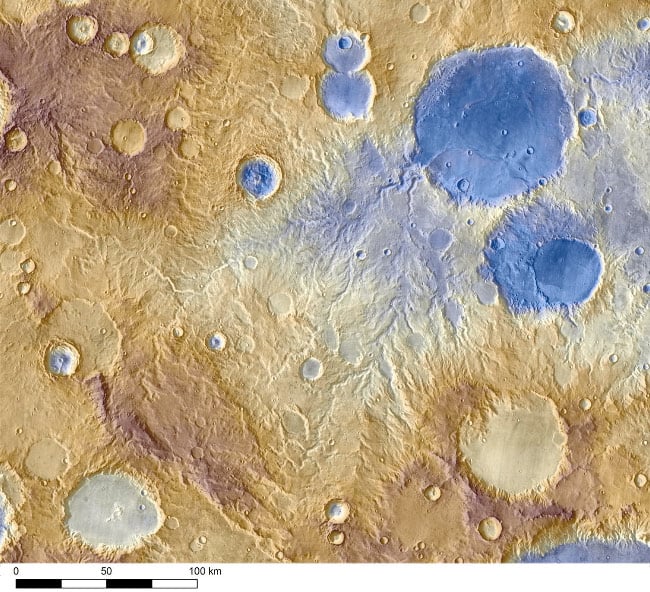This article is more than 1 year old
Boffins DREAMING of a WHITE CHRISTMAS ... on MARS!
Snow, not groundwater, could have carved red world's valleys
Brown University boffins reckon that some Martian valleys could have been carved by snowfall - rather than rivers running across the Red Planet's surface.

Not a weird cheese, but evidence of Martian valleys being carved by rainfall runoff
Although scientists now tend to agree that water once flowed on the planet, researchers are still unsure if that water came from below Mars' surface - groundwater - or from precipitation and runoff, like melted snowfall flowing down mountains.
A new study found that valleys at four different locations near tall mountain ridges or crater rims on Mars seem to have been made by meltwater from snow, or possibly rainfall. The researchers used a newly developed general circulation model (GCM) for the Red Planet to figure out the direction of prevailing winds at each place and then ran simulations of orographic precipitation to show where the wind would have caused snow and rain to fall.
Orographic precipitation is snow or rain that falls when moist prevailing winds are pushed up by mountain ridges. The simulations showed that the precipitation would have been heaviest at the heads of the valley networks.
“Their drainage density varies in the way you would expect from the complex response of precipitation to topography,” geological sciences graduate student Kat Scanlon said. “We were able to confirm that in a pretty solid way.”
Scanlon did her graduate work in meteorology in Hawaii, which has a typical orographic precipitation pattern. On the island, wet tropical winds from the east are pushed up by the mountains but run out of energy before reaching the top - so they dump their rain on the eastern side, creating a tropical jungle. The western edge is practically a desert because it sits in the rain shadow cast by the mountain's peak.
Similar patterns could have been at work on Mars, but the boffins still have to figure out if the model they used for the planet's weather holds up. The GCM they used predicts a cold climate, so the simulations were done with snow, which could have melted to form the networks - or occasionally been supplemented by rain.
“The next step is to do some snowmelt modelling,” Scanlon said. “The question is how fast can you melt a giant snowbank? Do you need rain? Is it even possible to get enough discharge [to carve the valleys] with just the snowmelt?”
The researchers hope the answers can help to firm up theories of what the Martian climate was like billions of years ago.
The study, "Orographic precipitation in valley network headwaters: Constraints on the ancient Martian atmosphere", was published in Geophysical Research Letters. ®
